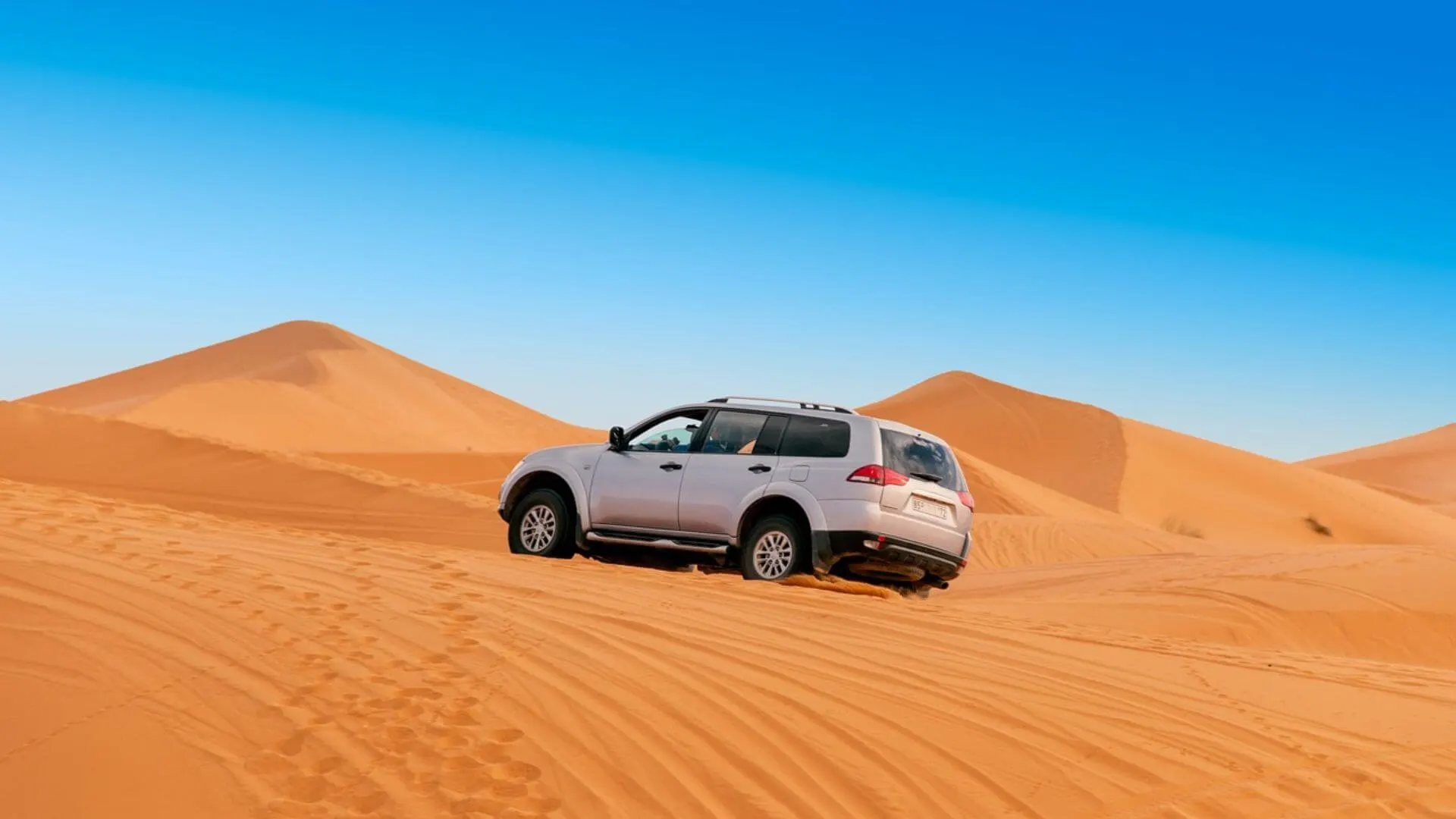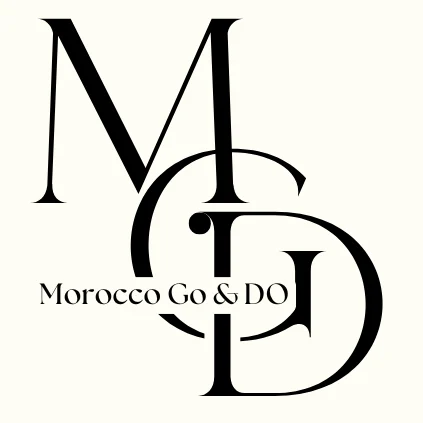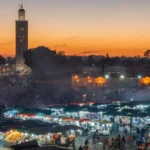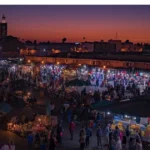Morocco
Where to Go & What to Do

Traveling to Morocco is an exciting adventure. It’s a place where ancient traditions meet modern charm. For those from the UK, planning a trip here is a chance to see a world full of colors, smells, and endless deserts.
When you go on Morocco holidays, you dive into a world of history and culture. Imagine walking through Marrakech’s busy streets, with its beautiful Riads and lively square. Or picture Fes, with its old university, and Chefchaouen, a blue town in the Rif Mountains.
This guide is here to help UK travelers understand Morocco better. It covers everything from history to modern life. It’s designed to make your trip both informed and unforgettable.
The best times to visit Morocco are spring, from March to May, and autumn, from September to November. During these seasons, the weather is mild and perfect for outdoor activities. It’s a great time to explore and enjoy the country’s beauty.
Spring and autumn are the best times to visit Morocco. Spring brings back the flowers, making the Atlas Mountains green and colorful. Autumn offers similar weather, with the added joy of harvests and local markets full of fresh food.
When planning your trip, remember that Morocco’s weather varies by region. Coastal areas like Casablanca and Essaouira have steady temperatures all year. But cities like Marrakech and Fes have more extreme weather, with hot summers and cold winters.
In the Sahara Desert, the weather changes a lot between day and night. This shows why it’s important to plan your visit carefully.
Morocco is a land full of history and vibrant culture. It offers travelers a wide range of experiences. Each place in the country has its own unique cultural hotspots that amaze and teach visitors.

Marrakech is famous for its busy souks, beautiful palaces, and lively public squares. At Marrakech, you can see the famous Jemaa el-Fnaa. It’s a UNESCO World Heritage site and one of the most lively places in the country.
The city’s rich history is seen in its architecture. The Koutoubia Mosque and the historic Saadian Tombs are stunning examples.
Fes is known for its well-preserved medieval architecture. The Fes el Bali medina is a maze of narrow streets and alleys. It’s home to important Moroccan landmarks, like the University of Al Quaraouiyine.
This university is the oldest operating educational institution in the world. The city’s souks and old-world charm take visitors back in time.
Chefchaouen is in the Rif Mountains and is called the “blue city” because of its blue buildings. It’s a peaceful place away from the busy cities. The town’s stunning views, rich artisan culture, and relaxed vibe offer a unique look at Morocco’s past and present.
Moroccan heritage is a rich mix of cultures. Its long history has made its traditions unique. Understanding Moroccan culture means learning about its deep history and daily life norms.
Moroccan customs blend old traditions with modern touches. Dress is a big part of these customs. Men often wear the djellaba, a long robe, and women wear long, modest dresses.
Greetings in Morocco show its traditions. Men shake hands and sometimes touch shoulders or cheeks. Women might nod or kiss cheeks, especially in conservative areas.
Islam is the main religion in Morocco, shaping daily life. The call to prayer, five times a day, is a big part of this. It shows how deeply religion is woven into Moroccan life.
Islamic festivals are key to Moroccan culture. Ramadan, a month of fasting, is very important. Eid al-Fitr, the end of Ramadan, is celebrated with prayers, feasting, and charity. Eid al-Adha honors Ibrahim’s sacrifice and is marked by sheep sacrifice and giving meat to the poor.
Morocco is a paradise for those who love adventure. It has many outdoor activities that let you see its different landscapes and culture. You can explore the Sahara Desert, the Atlas Mountains, and the beautiful Atlantic coast.
A top adventure in Morocco is the desert safari. It takes place in the Sahara Desert’s amazing dunes. You start in cities like Merzouga and Zagora and ride camels across huge sand areas.
You’ll stay in Berber tents overnight. This lets you experience local culture and see the stars. Desert safaris mix peace and excitement, making them a key part of Morocco’s adventure tourism.

Exploring the Atlas Mountains is a must in Morocco. There are trails for all, from easy to hard. The High Atlas, with Mount Toubkal, is a big challenge for hikers.
Trekking here includes visits to Berber villages. You get to see traditional mountain life. The views and culture make trekking in the Atlas Mountains unforgettable.
The Atlantic coast of Morocco is great for surfing. Places like Taghazout and Essaouira have perfect waves. They welcome surfers of all levels.
These towns are also laid-back, perfect for relaxing after surfing. The surfing scene here adds to Morocco’s lively culture, making your trip even better.
Moroccan food is a mix of flavors and textures. It shows the country’s rich culture and varied landscapes. When you visit Morocco, trying its unique dishes is a must.
Tagine is a key part of Moroccan food. It’s a slow-cooked stew made in a clay pot. The stew has tender meat, spices, and vegetables, nuts, and dried fruits.
The slow cooking makes the flavors blend perfectly. This dish is a true taste experience. Historians say it comes from ancient Berber tribes, showing its long history in Morocco.
Couscous is a big deal in Morocco. It’s eaten on Fridays with family. It’s made of steamed semolina grains with vegetables, meats, and broth.
Making couscous is an art. It takes skill and patience. The mix of grains and broth is unforgettable, showing centuries of cooking knowledge.
Morocco’s street food is lively and diverse. You’ll find savory pastries, grilled meats, and fresh seafood. It’s a feast for your senses.
Try dishes like harira soup, briouats, and honey-drenched pastries. The souks offer a real look at local food culture. Street food is a key part of exploring Moroccan cuisine.
When planning a trip to Morocco, UK travelers should consider visa and entry needs, health and safety, and currency. This ensures a smooth trip and follows local and international rules.
UK citizens usually don’t need a visa for Morocco stays up to 90 days. But, they must have a passport valid for at least six months from entry. It’s also wise to check the Moroccan consulate for updates on entry rules. Following the Morocco travel advisory helps with all travel needs.
Health and safety in Morocco are key. The Morocco travel advisory suggests getting vaccinated for typhoid, hepatitis A, and rabies, especially for long stays or rural visits. Major cities have good healthcare, but bring prescriptions and a first aid kit. Following tourism guidelines keeps you healthy and happy. Also, keep up with government safety advisories for your area.
The Moroccan Dirham (MAD) is the official currency. Always exchange money at official places, not street vendors. Big cities have many ATMs and credit cards are common in hotels and shops. Tell your bank you’re traveling abroad to avoid account issues. Make sure your contactless cards work in Morocco for easy travel preparation.
Morocco has a wide range of places to stay, from luxury hotels to cozy riads and budget hostels. Each one offers a unique experience, blending Morocco’s rich culture with modern comforts. Here’s a closer look at these options to help you choose the best one.
Morocco is home to some of the world’s top luxury stays. These are mainly found in bustling city centers. For example, La Mamounia in Marrakech has beautiful gardens and a spa that celebrates Moroccan traditions. It’s all about comfort here.
By the coast, places like the Sofitel Agadir Royal Bay Resort offer stunning views and lavish rooms. These hotels also have services for international guests, making booking easy and luxurious.
Staying in a traditional Riad is a unique experience. Riads are found in medinas of cities like Marrakech and Fes. They are known for their detailed architecture, central courtyards, and personalized service.
Places like Riad Kheirredine give you a taste of local life. They have beautifully designed rooms and serve local food. Travel experts say staying in a Riad is a must for its cultural depth and warm welcome.
For those on a tight budget, Morocco has plenty of affordable options. Hostels like Equity Point Marrakech offer cheap stays without sacrificing comfort or safety. They’re in the heart of cities, with shared spaces, free Wi-Fi, and tours.
These hostels are great for young travelers and backpackers. They’re praised for their friendly vibe and easy access to Morocco’s attractions.
Morocco’s shopping scene is vibrant and full of life. It combines old-world charm with modern touches. The souks and markets are the heart of this experience. They are filled with colors, smells, and textures, offering a true cultural adventure.

Moroccan souks and markets, like those in Marrakech and Fes, are famous for their wide range of goods. Here, you can find traditional Berber rugs, fragrant spices, intricate metalwork, and more. These places give you a peek into Moroccan daily life and trade traditions.
Handicrafts and souvenirs in Morocco are steeped in culture, making them great keepsakes. You can find beautiful textiles, leather goods, and pottery. It’s important to talk to sellers and artisans to make sure you’re getting authentic items. Haggling is also part of the fun, adding to the cultural experience.




